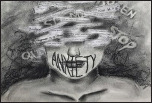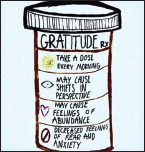Abstract
Since December 2019, the coronavirus (COVID19) outbreak has impacted everyone's daily lives globally, especially those experiencing mental health issues. The well-being and mental healthcare of patients, families, and health-care professionals who have been directly or indirectly affected by this pandemic has not been well addressed. Governments have asked their citizens to take actions, some of which include making sacrifices that may result in dignity violations and moral injury, a term originating in the military to describe the psychological distress that results from actions, or the lack of them, which violate a person's moral or ethical code. Health professionals, individuals, and communities have changed their way of life and working to decrease coronavirus infectivity, causing additional stress and increasing potential for moral injury. It is important to hear the first-hand experience of people affected to understand the new psychosocial stressors that they face in their day to day lives and what they found helpful in managing these. This global survey carried out by the World Dignity Project in collaboration with the Global Mental Health Peer Network is to ensure that the voices of people with lived experience of mental health, their families, and professionals that work with them are heard.
Aims:
To understand the impact of the coronavirus pandemic on mental health, well-being, and dignity, what has helped and what lessons can be learned to support coping in future.
Materials and Methods:
Online qualitative and quantitative survey (April 15–June 15, 2020)
Participants gave narrative responses to several questions, posting photos or images.
Analysis:
Narrative responses were analyzed using the Gioia approach, a systematic inductive approach to develop concepts that help make sense of socially constructed worlds. Visual ethnographic data was used to give insight into the participant's socio-cultural context.
Keywords: Coronavirus, resilience, wellbeing
INTRODUCTION
The COVID-19 pandemic has led to an increase in mental health difficulties, mental illness and decreased well-being. There are many Government and Public Health policies being developed to reduce the spread of coronavirus adopting a population health approach.[1] These authors suggested the need for more research into the psychosocial impact of COVID-19 on individuals and populations to develop context-informed comprehensive evidence-based practice and raise public awareness. We need to find new ways of supporting peoples during crises such as this pandemic, ensuring that the voices of people directly affected are heard.
There have been may research publications since the beginning of the COVID 19 pandemic but not enough of them have focused on the individual voices of the people affected. Behind each statistic are humans and we are intending to highlight some of the human stories using a qualitative approach.
The COVID-19 pandemic has caused fear in the population either because of poor understanding of government policy, misinformation in the media and a failure to understand track and monitoring surveillance procedures.[2,3]
Governments have asked their citizens to take actions, some of which include making sacrifices that may result in dignity violations and moral injury, a term originating in the military to describe the psychological distress that results from actions, or the lack of them, which violate a person's moral or ethical code.[4]
This has produced public health challenges and the associated increase in mental ill-health and reduction in well-being in low, medium, and high-income countries. This is one of the reasons why we are keen to understand how this has been experienced by individuals in their own words so that we can understand how participants have been affected by the coronavirus pandemic, what has helped them during the coronavirus pandemic and what lessons can be learned to enhance coping strategies in future.
Better pre-COVID 19 health and social care systems that have a collaborative or integrated model of care are more likely to be able to support their citizens to cope better.[5,6,7] There is a large body of publications about collaborative and integrated care and the consistent evidence is that this approach works, especially for mental health conditions and many long-term physical health conditions.[8,9] The emphasis of much of the work published about collaborative and integrated care has mostly focused on professionals and systems and not so much on the role of the individual. We are keen to ensure that the voice of the individual is heard, and their personal experiences are considered in order to enable better partnership, which respects an individual's dignity and lived experience.
We were keen to get the views of people who were directly affected by the COVID-19 pandemic in order to understand how individuals have coped, particularly because the policy of social distancing can lead to increased social isolation and a feeling of loneliness.
Loneliness and well-being
The COVID 19 pandemic has had consequences for people's well-being, and government policies of social distancing and stay home orders have contributed to reducing the spread of COVID 19; they have resulted in people reporting a feeling of loneliness, and worse in vulnerable people.[10]
It is important to understand how people have tried to cope with loneliness during the coronavirus pandemic and the tools they have used because loneliness is associated with increased physical health complications and results in increased mortality in older adults. Loneliness is associated with long term conditions, including hypertension, other cardiovascular diseases, including stroke, cognitive decline.[11,12,13] There is, therefore, a need to better understand how individuals have attempted to cope with increased subjective feelings of loneliness, especially as some studies have reported that up to 61.5% of people in the “sheltering in place” endorsed “feeling socially isolated much of the time” on the UCLA Loneliness Scale-3. Those people who complained of loneliness were significantly more depressed than those who did not complain of loneliness and were also at increased risk of experiencing suicidal ideation.[14]
A UK survey of a psychiatric disorder during the COVID-19 pandemic that included over 15,530 respondents found a 29.2% prevalence in general psychiatric morbidity and reported that 35.86% of people reported feeling lonely during the pandemic. This study showed that having a job or living with a partner were significant protective factors for psychiatric disorder and loneliness during the coronavirus pandemic and suggested a need for more research in this field.[15]
We believe that one of the drivers causing stress and poor well-being during the coronavirus pandemic is the loneliness associated with restrictions on movement and social interaction imposed to slow down the spread of the virus in order to bring the pandemic to an end.
Pandemics will continue to be a significant public health threat and, according to 2020 WHO report, more than 30% of nations had no preparedness and response plans for the COVID-19 pandemic.[16] Future preparations should be informed by what individuals found helpful and how we can best develop future pandemic clinical pathways that can hold the needs of the individual at the center.
MATERIALS AND METHODS
This is part of a larger study, and we are reporting the results of online qualitative research.
The study was conducted from April 15, 2020 to June 15, 2020 using a digital platform to capture text narratives and personally selected imagery (photos and web images).” The imagery is a means to gain insight into the participant's psychological state and socio-cultural context.[17]
Participants gave narrative responses to several questions, posting photos or images:
What has been the greatest impact from the COVID19 pandemic on your mental health and wellbeing?
What is helping you deal with this impact?
What help would you like to see made available in a future similar situation?
What do you feel are the greatest positive and negative impacts on your mental health dignity?
Demographic information was collected using the online platform.
The sample was collected by providing the online platform link to mental health professionals and the leader of the Global Mental Health Peer Network (GMHPN), a peer-group organization, to distribute within patient, peer, and health-care professional (HCP) networks, and by posting the link on social media.
The Trustees of the World Dignity Project and GMHPN discussed the methodology to ensure that there were no ethical violations before the global research taking place.
The purpose of the study was explained to participants in a welcome letter, which identified the study sponsor as The World Dignity Project and the GMHPN, informed them about anonymity and offered mental health resources.
Sample
Three hundred and forty three unique logins to the platform resulted in a sample of 88 individuals, a response rate of 26%.
The sample comprised 88 individuals age 18–60+ years in 17 countries, in 6 continents, of which half were low- and medium-income countries.
41% were age 18–45 and 33% age 46–59. 70% identified as females and 30% as males.
45% reported that they had been diagnosed with one or more mental disorders including anxiety (37%), depression (38%), posttraumatic stress disorder (PTSD) (10%) and attention deficit hyperactivity disorder (ADHD) (5%) and obsessive-compulsive disorder/bipolar/schizophrenia (<2% each). Ninety percent had at least an undergraduate degree, 63% having a postgraduate degree, making this an especially well-educated sample.
Seventy percent were employed full-or part-time, 16% self-employed and 7% retired prior to the pandemic.
Analysis
Data were analyzed from an interpretivist perspective, using a systematic inductive approach appropriate for the development of concepts framed in participant language, which help make sense of socially constructed worlds.[18] These concepts demonstrate substantial health and psycho-social impacts of the pandemic along with perceived mental health dignity violations and moral injury.[4]
RESULTS
There appears to have been little impact on employment status, with only two people being laid off without pay, likely reflecting (along with high levels of education) a high proportion of medical staff and peer support workers in the sample, based on narrative comments.
Mental health dignity: Positive and negative impacts of COVID19
Almost all participants (90%) perceive negative impacts on their mental health dignity (when asked directly), but impacts are most devastating for those who self-reported diagnosis with a mental disorder. Those with a diagnosis report worsened symptoms or live with the fear of a relapse. Many are especially affected by isolation from their support networks. Some have been left without care because they have not been able to get face-to-face access to their care providers, support groups, and family or have been temporarily discharged. A few have been unable to access online support or tele-care options, lacking technical resources.
Some of the individual commentaries are below:
“All my usual symptoms have worsened and I feel like the last 6 years of doing all I could to recover has been wiped out in 4 weeks…too low/distressed to be able to use my usual management techniques.”
Female 60+, unspecified, UK
“I am living with underlying worry that my PTSD triggers [being isolated] will create a depression episode. I am seeing increasing flashbacks and triggers.”
Male 30–45, PTSD, Australia
“I've been working at home. I don't see my friends…nobody knows I'm struggling with my depression.”
Male 18–29, anxiety and depression, Australia
“It has been hellish, not knowing when this lock down will end, not knowing who to reach out to…only a slow landline means we cannot listen in to any online chat sites which might help people like me who are battling.”
Female 60+, anxiety, depression, PTSD, South Africa
HCPs also report negative impacts on their mental health dignity and that of their patients. They report: staff burnout, feeling unable to talk about their own mental health and issues adapting to tele-health.
Some of the individual commentaries are below:
“Staff are only able to take sick leave if physically ill, not if in need of self-care….I am witnessing the employees that I supervise displaying signs of burnout yet not able to grant them any annual leave for a mental health day. To me, this is a violation of every employee's mental health dignity as it is not an issue of not having coverage.”
Female 46–59, anxiety and depression, USA
“I feel there is a stigma attached to being bi-polar and so I don't feel I can adequately express my struggles with COVID19 and I'm at the heart of the work daily.”
Withheld
“Not being able to respond to mental health patients' distress appropriately because we have to use the telephone rather than make face-to-face contact.”
Female 46–59, UK
“Changing from face-to-face to phone contact has been a challenge and needed fine tuning to look after myself.”
Female 30–45, bipolar, Australia (peer worker)
While its noted that the wider recognition of mental health issues in the pandemic reduces stigma and enhances dignity, some feel that those suffering from a mental disorder are being neglected and that mental health remains in the shadows amid the spotlight of physical health.
Some of the individual commentaries are below:
“Reduced stigma of mental health problems, as more people generally acknowledge anxiety and low mood.”
Male 60+, anxiety, UK
“There has been enormous additional funding but all for people who normally do not experience mental illness…there is a divide between those with new depression/anxiety vs those with chronic/severe conditions.”
Female, age 30–45, bipolar, Australia (peer worker)
“Heroes of the spotlight, dismissing non-physical symptoms as insignificant because it is not news or award winning…This impacts me mentally and belittles all of our mental health dignity.
Male 46–59, depression, anxiety and ADHD, USA (healthcare worker)
Impacts of COVID 19 on mental health and well-being
The pandemic has caused substantial negative mental health and well-being impacts, especially for those with a diagnosed mental disorder. 95% of research participants mention multiple negative impacts, triggered by health and financial worries, and by the total disruption of work-life routines imposed by lockdown.
Anxiety was the most frequently described impact (40%), followed by loneliness (25%), fear (13%), uncertainty (6%), grief (5%), and anger (3%).
Anxiety
Anxiety is the most frequently mentioned negative impact by 40% of participants, attributed to health concerns for self and loved ones and to the total disruption of personal, work and mental healthcare routines.
“I was already anxious at the start of the lockdown…in the first week I had a phone call from my
CMHT, who I have been with for 17 years and a letter telling me I have been discharged…I have been left to cope alone.”
Female 60+, unspecified SMI, UK
“The biggest impact has been having to work from home…As much as I try to maintain some sense of routine, I find myself getting lost….I started having what I call “anxiety dreams” that wake me up with a sense of dread.”
Male 46–59, anxiety & bipolar, USA
“Feeling anxious about the number of deaths, me or someone in my family becoming infected, the economic toll…antsy about not being able to leave my house, stressed when I do go out.”
Male 30–45, anxiety, Mexico
“There is no division between free time and work time.”
Male, 60+, Slovenia
Working remotely under pressure from employers is exhausting and adds to anxiety.
“The necessity to remain indoors with limited access to physical activities or daily required work task to be completed at home rendered anxiety…overwhelmed with exaggerated negative thoughts.”
Male, 30–45, depression and anxiety, Malaysia

“The greatest impact is anxiety from our company owners…working with anxious mood and feeling insecure, less belonging, caring and respect…we worked 9am to 10p everyday and were required to stay online.”
Female, 18–29, China
Working women with school-age children face the destruction of carefully balanced routines for juggling family, childcare and work responsibilities. This causes stress and family tensions.
“The greatest impact has been a disruption or a 'left turn' from routine, structure. Ensuring school work is done is a challenge, we find ourselves in blow-ups…I am not sure which way to turn or to get time for myself.”
Female, 30–45, bipolar, USA (first responder)
“This phase has involved no house help…which leaves me strapped for time for myself and my work.
My child is not at school…. Since [spouse and I] are both over-worked and tired, differences easily escalate to arguments.”
Female, 30–45, India
Healthcare professionals are working longer hours, juggling family care and their health concerns are greatly exacerbated by the fear of infecting loved ones after exposure to COVID19 patients.
“As a mental health nurse, I have been asked to work more shifts in the community…[which] has resulted in greater exposure to the coronavirus, daily health checks, increased stress for my mental and physical wellbeing.”
Female, 60+, Australia
“Being on an active redeployment list after not having worked in direct care for over 5 years. Our organization does not offer the clinician any choice/input…We feel powerless and anxious.”
Withheld
“Stress of staff members seeking security and assurance of a safe future. Feeling overwhelmed at night trying to make sure I have everything in place to look after our clients (of a Community Service).”
Female, 60+, Australia
Uncertainty and fear
Uncertainty about the future, in both health and economic terms, is widespread and has exacerbated symptoms for those with a diagnosed mental disorder.
“Financial uncertainty…business operations are severely hit with staff having to undergo salary reduction. Uncertainty of the future and no clear outcome of what the future holds.”

Male, 30–45, depression and anxiety, Malaysia
24/7 media coverage has heightened anxiety, fear and uncertainty. Social media creates pressure for self-improvement.
“Disturbing to see television pictures of people getting impacted.”

Male, age 60+, India
“I have lost my routine and my distractions and I have this looming thought that I need to change/reinvent myself during this time (and emerge as a perfect butterfly!) and that is even more frightening and overwhelming.”
Female 30–45, anxiety, Australia
Isolation and loneliness
Isolation-from friends, family and familiar social activities-is the second most frequently mentioned impact by 25% of participants. Isolation leads to loneliness, especially among older people living alone, exacerbates anxiety, fear and trauma (feeling “trapped”) and can lead to over-eating. If spouses and other family members are isolated together, this can escalate conflict.

“Loneliness due to being isolated from family.”
Female 60+, USA
“I get cabin fever and find my mood drops. I can feel trapped because I can't go to the movies, or go shopping or catch up for coffee with friends… I am eating too much. Weight gain impacts my moods.”
Female 60+, Australia
Positive impacts of the pandemic
Nine participants mention positive impacts: working from home (making it easier to manage mental health conditions) and having a total break from the pressures of daily living which can improve mental health.
“I have been able to have a break from the expectations of everyday living, a time to rejuvenate… I've had a few experiences of strong anxiety as my husband was made redundant, so we are living off one income. I also have appreciated how little you need to survive and be comfortable. It's time to reevaluate what's important.”
Female 30–45, Australia
What has helped?
Most participants have made an effort to find coping strategies for lockdown, most commonly: staying in human contact with friends/family via phone/video (28%), indoor/outdoor exercise (27%), meditation or self-care (26%). For some, work and support from colleagues helps reduce isolation and provides a reassuring degree of normalcy.
Around a quarter mention using cognitive behavioural strategies such as keeping to a schedule and staying positive through prayer or conscious gratitude. Being in nature, or living in a house with access to open space is important.
Participants, including those with a diagnosed mental health disorder, also note positive mental health dignity impacts from successfully using chosen coping mechanisms.
“I have recognized my strength and I've had to figure out new coping skills. This a great impact on my dignity.”
Withheld (bipolar)
“A positive dignity impact is that I can release the anxiety with the help of friends with positive thinking.”
Female, 18–29, China
“From the isolation flows fear and worry…what helps is getting outside for walks (fresh air and sunshine), meditation, connection with friends and family via FaceTime or zoom and sleep/rest.”
Female, 30–45, USA

Working on new solutions for the businesses…regular home workouts, yoga, prayers and meditation.”
Male, 30–45, depression and anxiety, Malaysia

“Meditation…I live in a beautiful house which has greenery and ample sunlight, that adds to my well-being.”

Female, 30–45, India
“The ability to bwork from home. A supportive employer and colleagues. My daughter. Gratitude for everything.”
Female, 30–45, anxiety and ADHD, Canada

Table 1 below summarises what participants felt helped them cope better with the impacts of the COVID-19 pandemic. The five most frequently mentioned included (1) staying in touch with friends/family via technology, (2) exercise, (3) meditation, self-care, sleep (4) work, contact with colleagues (5) hobbies, staying busy.
Table 1.
What has helped participants deal with coronavirus diseases-19 impacts
| What has helped you deal with this impact? | Percentage of mentioning* |
|---|---|
| Staying in touch with friends/family via technology | 28 |
| Exercise | 27 |
| Meditation, self-care, sleep | 26 |
| Work, contact with colleagues | 17 |
| Hobbies, staying busy | 16 |
| Hope, belief, gratitude, prayer | 11 |
| Nature | 9 |
| Trying to keep to a schedule | 6 |
| Following the science | 3 |
| Entertainment/porn | 3 |
| Avoiding media | 2 |
*Some mention more than one item
Where did you look for help?
Only one third of participants have sought help from external sources including online (11%), phone helplines (6%) and mental health apps such as Calm and Insight Timer (5%). Online help included webinars (e.g., SAMSHA), online exercise/yoga classes, online worship or mediation. 20% have sought help from their regular care provider.
Only 2 people mention seeking support from their employer or receiving materials from a health insurer. One lady who had been discharged unsuccessfully sought help from a local volunteer group.
“I called the local volunteer who had posted something through the door saying they offered emotional support. Unfortunately this poor guy had no experience…and was clearly overwhelmed by my emotional distress.”
Female 60+, unspecified SMI, UK
What help would you like to see made available?
In case of future pandemics, personalized professional and peer support is wanted in place of generic resources. Greater use of telehealth technology is most often suggested (by 22% of participants) for personal tele-consultations or virtual support group sessions.
“Greater use of technology…user groups where people could drop in and out as they needed. Simply knowing there are people who care is often enough to reduce anxiety and promote a sense of communal care.”
Withheld
“More help from primary mental health teams…I'm not sure how much Zoom is used in community MH teams but this is something I'd like to see more of.
Female 18-29, Australia (MH Nurse)
“Talking with Peer Support people and Lived Experience people like myself who know the situation.”
Female 46–59, depression, Australia
However 13% want proactive human contact from HCPs, such as phone calls, local or peer support groups for the elderly, visual-impaired or less tech-savvy.
“Some kind of reach out service. It'd be good if I can get a phone call once or two per week.”
Male 18–29, anxiety and depression, Australia
Some want employers to provide more management support for employees.
“Workplaces to provide team debriefings-counselling as mandatory…discuss the fact that we are not as busy with work but we are overloaded with living like this and it is draining, tiring, hard work indeed.”
Female 30–45, anxiety, Australia
Better pandemic planning, government support for small businesses, expansion of mental health services and destigmatizing seeking regular professional help were also mentioned.
“Seeing a psychologist in China is still seen as “you have something going on”…it should be like annual medical examination-everyone builds a habit to see psychologists twice a year so that it is normalized.”
Female 18–29, China
Table 2 below summarises what participants wanted to have available in future pandemics. The five most frequently mentioned included (1) Tele-psychiatry, virtual primary health care (2) Virtual user groups (e.g., Depression and Bipolar Support Alliance), free sessions, online chat (3) More accessible help (not online), 24/7 phone helplines (4) Proactive (human) contact (5) Expansion of mental health services, improved pandemic planning.
Table 2.
Incidence of what help participants would like to see in future pandemics
| What help would you like to see available in future pandemics? | Percentage of mentioning* |
|---|---|
| Tele-psychiatry, virtual primary health care | 13 |
| Virtual user groups (e.g., DBSA), free sessions, online chat | 9 |
| More accessible help (not online), 24/7 phone helplines | 8 |
| Proactive (human) contact | 5 |
| Expansion of mental health services, improved pandemic planning | 5 |
| MH programs (e.g., employee assistance, bounce back -school) | 4 |
| Exercise/mediation classes free online | 4 |
| Media regulation, reduce media exposure | 4 |
| Business financial support/employment support | 4 |
| Tips on maintaining contact, books, advertising resources | 4 |
| Local help groups, peer worker groups | 3 |
| Other | 7 |
| Not sure, don’t know | 34 |
*Some mention more than one item. DBSA – Depression and bipolar support alliance; MH – Mental health
DISCUSSION
This research adds to the evidence being gathered globally about the consequences of the current pandemic, particularly well-being.
During this century we have been exposed to several SARS-like illnesses including SARS CoV.1 in 2002–2003 and now SARS CoV.2, termed COVID-19. Although many coronaviruses can be found affecting animals when these viruses jump to humans the consequences can be very severe, and future outbreaks are considered inevitable.[19,20,21] It is therefore incumbent on all of us to prepare for the future and identify protective factors that will help the general population cope in the face of future pandemics.
Our study showed that about 90% of all respondents perceived a negative impact of the coronavirus on their mental health and dignity. This is consistent with the findings of other authors.[22] In keeping with other studies our respondents with a self-reported mental illness reported worsened symptoms or living in fear of mental health relapse.[23] There is therefore a need for health care systems to invest in programmes to better support people with a pre-existing mental illness during a pandemic by understanding their coping strategies and reinforcing these to increase resilience so that they can be applied during a crisis situation such as a pandemic.[24,25] There is also a need for employers to invest in research to understand how to mitigate for the impacts of remote working on employee well-being.
Participants in this study mentioned a range of things that they thought had helped them [Table 1] and the majority included activities that promoted social contact and the avoidance of loneliness.[15,26] This is similar to other studies that have looked at coping skills during the COVID-19 pandemic.[6]
In answer to the question asking what people would like to see in future pandemics, the use of IT to make virtual contact with other people and for medical consultations was frequently cited. This is in keeping with the findings in China at the start of the pandemic.[27] We need to develop better ways to train our workforce to deliver digital psychiatry because this will be protective to both therapist and patients and will enable us to better deploy resources during periods of crisis, especially as the population recognize a need for this.[28]
CONCLUSIONS
This research has identified many themes which should inform future crisis planning to promote mental health and ensure access to services. In particular, there has been systemic failure to support individuals who are receiving care for a diagnosed mental health disorder by discharging them or failure to ensure HCPs contact. Tele-consultations and support groups are welcomed, but this research suggests that patients and HCPs have experienced this negatively, and some patients have rejected remote care outright.
Phone or personal outreach is essential for tech-deprived patients and would be appreciated by many others. Better mental health support is required for HCPs. Generic hotlines and resources advising on coping strategies are useful for the general population but cannot replace regular contact with familiar mental health care providers.
The general population has also suffered widespread mental health impacts. Remote working has helped alleviate loneliness and financial loss but can be stressful; employers were unprepared for the impacts of the pandemic and must develop plans to better support employee mental health. The majority of our respondents were women and working women's mental health has been especially compromised by lack of remote learning provision from schools. Government help for small businesses has often been poorly implemented, causing financial uncertainty and anxiety. Longer term, city planners should address the need for natural spaces which can be seen and accessed close to home.
Through this research people have spoken. We have heard the voices of people with mental health problems and health care providers-real people who have suffered. We owe them a duty to capture their experiences into our future pandemic planning and pathway design. HCPs have expressed their own anxieties about fear of infecting loved ones, a question we do not ask when we are supporting one another in the workplace. Mentoring and support for staff should be part of good practice to encourage improved personal resilience.
Limitations and future research
The sample was not representative of the population in being more highly educated and barely impacted by job losses. Future research might include less educated sample and those who have been seriously economically impacted. It is essential to conduct research on how on how to optimize the patient and HCP experience and to explore what training may be needed. Employers should sponsor post hoc research to identify how they can better support employee mental health in remote working situations.
Financial support and sponsorship
Nil.
Conflicts of interest
There are no conflicts of interest.
Acknowledgments
We would like to thank everybody who gave up their time to contribute to this research. Without them the research would not be possible.
REFERENCES
- 1.Sun S, Lin D, Operario D. Need for a population health approach to understand and address psychosocial consequences of COVID-19. Psychol Trauma. 2020;12:S25–7. doi: 10.1037/tra0000618. [DOI] [PMC free article] [PubMed] [Google Scholar]
- 2.Ornell F, Schuch JB, Sordi AO, Kessler FH. Pandemic fear” and COVID-19: Mental health burden and strategies. Brazilian J Psychiatry. 2020;42:232–5. doi: 10.1590/1516-4446-2020-0008. [DOI] [PMC free article] [PubMed] [Google Scholar]
- 3.Ferguson NM, Laydon D, Nedjati-Gilani G, Imai N, Ainslie K, Baguelin M, et al. Report 9. Impact of Non-Pharmaceutical Interventions (NPI's) to Reduce COVID-19 Mortality and Health Care Demand. 2020. [Last accessed on 2020 Sep 15]. Available from: https://www.imperial.ac.uk/media/imperial-college/medicine/sph/ide/gida-fellowships/Imperial-College-COVID19-NPI-modelling-16-03-2020.pdf .
- 4.Litz BT, Stein N, Delaney E, Lebowitz L, Nash WP, Silva C, et al. Moral injury and moral repair in war veterans: A preliminary model and intervention strategy. Clin Psychol Rev. 2009;29:695–706. doi: 10.1016/j.cpr.2009.07.003. [DOI] [PubMed] [Google Scholar]
- 5.Poudel K, Subedi P. Impact of COVID-19 pandemic on socioeconomic and mental health aspects in Nepal. Int J Soc Psychiatry. 2020;66:748–55. doi: 10.1177/0020764020942247. [DOI] [PMC free article] [PubMed] [Google Scholar]
- 6.Holmes EA, O'Connor RC, Perry VH, Wessely S, Arseneault L, Ballard C, et al. Multidisciplinary research priorities for the COVID-19 pandemic: A call fro action for mental health science. Lancet Psychiatry. 2020;7:547–60. doi: 10.1016/S2215-0366(20)30168-1. [DOI] [PMC free article] [PubMed] [Google Scholar]
- 7.Otu A, Charles CH, Yaya S. Mental health and psychological well-being during the COVID- 19 pandemic: The invisible elephant in the room. Int J Ment Health Syst. 2020;14:38. doi: 10.1186/s13033-020-00371-w. [DOI] [PMC free article] [PubMed] [Google Scholar]
- 8.Ivbijaro GO, Enum Y, Khan AA, Lam SS, Gabzdyl A. Collaborative care: Models for treatment of patients with complex medical-psychiatric conditions. Curr Psychiatry Rep. 2014;16:506. doi: 10.1007/s11920-014-0506-4. [DOI] [PMC free article] [PubMed] [Google Scholar]
- 9.Funk M, Ivbijaro G. Integrating Mental Health into Primary Care: A Global Perspective WHO/Wonca. 2008 [Google Scholar]
- 10.Miller G. Social distancing prevents infections, but it can have unintended consequences Science. [Last accessed on 2020 Sep 15]. Available from: https:wwwsciencemagorg/news/2020/03/we-are-social-species-how-will-social-distancing-affect-ushttps:wwwsciencemagorg/news/2020/03/we-are-social-species-how-will-social-distancing-affect-us .
- 11.O'Suillebhain PS, Gallagher S, Steptoe A. Lonelines, living alone, and all-cause mortality: The role of emotional and social loneliness in the elderly during 19 uears of follow-up. Psychosomatic Med. 2019;81:521–6. doi: 10.1097/PSY.0000000000000710. [DOI] [PMC free article] [PubMed] [Google Scholar]
- 12.Valtorta NK, Kanaan M, Gilbody S, Hanratty B. Loneliness, social isolation and risk of cardiovascular disease in the English Longitudinal Study of Ageing. Eur J Prev Cardiol. 2018;25:1387–96. doi: 10.1177/2047487318792696. [DOI] [PubMed] [Google Scholar]
- 13.Valtorta NK, Kanaan M, Gilbody S, Ronzi S, Hanratty B. Loneliness and social isolation as risk factors for coronary heart disease and stroke: Systematic review and meta-analysis of longitudinal observational studies. Heart. 2016;102:1009–16. doi: 10.1136/heartjnl-2015-308790. [DOI] [PMC free article] [PubMed] [Google Scholar]
- 14.Killgore WDS, Cloonan SA, Taylor EC, Dailey NS. Loneliness: A signature mental health concern in the era of COVID-19 Psychiatry research 2020 Aug;290 113117. [Last accessed on 2020 Sep 15]. Available from: https:doiorg/101016/jpsychres2020113117https:doiorg/101016/jpsychres2020113117 . [DOI] [PMC free article] [PubMed]
- 15.Li LZ, Wang S. Prevalence and predictors of general psychiatric disorders and loneliness during COVID-19 in the United Kingdom? Psychiatry Res. 2020;291:113267. doi: 10.1016/j.psychres.2020.113267. DOI: 10.1016/j.psychres.2020. [DOI] [PMC free article] [PubMed] [Google Scholar]
- 16.World Health Organization. Report Coronavirus Disease 2019 (COVID-19): Situation Report. Geneva: World Health Organization; 2020. [Google Scholar]
- 17.Pink S. Doing Visual Ethnography: Images, Media and Representation in Research. London: SAGE; 2001. [Google Scholar]
- 18.Gioia DA, Corley KG, Hamilton AL. Seeking qualitative rigor in inductive research: Notes on the gioia methodology. Organ Res Methods. 2013;16:15–31. [Google Scholar]
- 19.Jones KE, Patel NG, Levy MA, Storeygard A, Balk D, Gittleman JL, et al. Global trends in emerging infectious diseases. Nature. 2008;451:990–3. doi: 10.1038/nature06536. [DOI] [PMC free article] [PubMed] [Google Scholar]
- 20.Morse SS, Rondinini C, Di Marco M, Breit N, Olival KJ, Daszak P. Global hot-spots and correlates to emergng zoonotic diseases. Nature Communities. 2017;8:1124. doi: 10.1038/s41467-017-00923-8. [DOI] [PMC free article] [PubMed] [Google Scholar]
- 21.Lango MN. How did we get here? A short history of COVID-19 and other coronavirus related epidemics. Head Neck. 2020;42:1535–8. doi: 10.1002/hed.26275. [DOI] [PMC free article] [PubMed] [Google Scholar]
- 22.Nilima N, Kaushik S, Tiwary B, Pandey PK. Psycho-social factors assocaited with the nationwide lockdown in India during COVID-19 pandemic. Clinical Epidemiology and Global Health. 2020 Jun 30; doi: 10.1016/j.cegh.2020.06.010. doi: 101016/jcegh202006010 Online ahead of print. [DOI] [PMC free article] [PubMed] [Google Scholar]
- 23.Banerjee D, Rai M. Social isolation in Covid-19: The impact of loneliness. Int J Soc Psychiatry. 2020;66:525–7. doi: 10.1177/0020764020922269. [DOI] [PMC free article] [PubMed] [Google Scholar]
- 24.Lazarus RS, Folkman S. Stress, Appraisal and Coping. Berlin: Springer Publishing Company; 1984. [Google Scholar]
- 25.Folkman S. Stress, health, and coping: Syntehsis, commentary and future directions. In: Folkman S, editor. The Oxford Handbook of Stress, Health and Coping. Oxford: Oxford University Press; 2010. [Google Scholar]
- 26.Luchetti M, Lee HJ, Aschwanden D, Sesker A, Strickhouser JE, Terracciano A, et al. The trajectory of loneliness in response to COVID-19. Am Psychol. 2020. Supplemental materials. http://dxdoiorg/101037/amp0000690supp . [DOI] [PMC free article] [PubMed]
- 27.Li S, Wang Y, Xue J, Zhao N, Zhu T. The impact of COVID-19 epidemic declaration on psychological consequences: A study on active weibo users. Int J Environ Res Public Health. 2020;17:2032. doi: 10.3390/ijerph17062032. [DOI] [PMC free article] [PubMed] [Google Scholar]
- 28.Ćosić K, Popović S, Šarlija M, Kesedžić I. Impact of human disasters and COVID-19 pandemic on mental health: Potential of digital psychiatry. Psychiatr Danub. 2020;32:25–31. doi: 10.24869/psyd.2020.25. [DOI] [PubMed] [Google Scholar]


